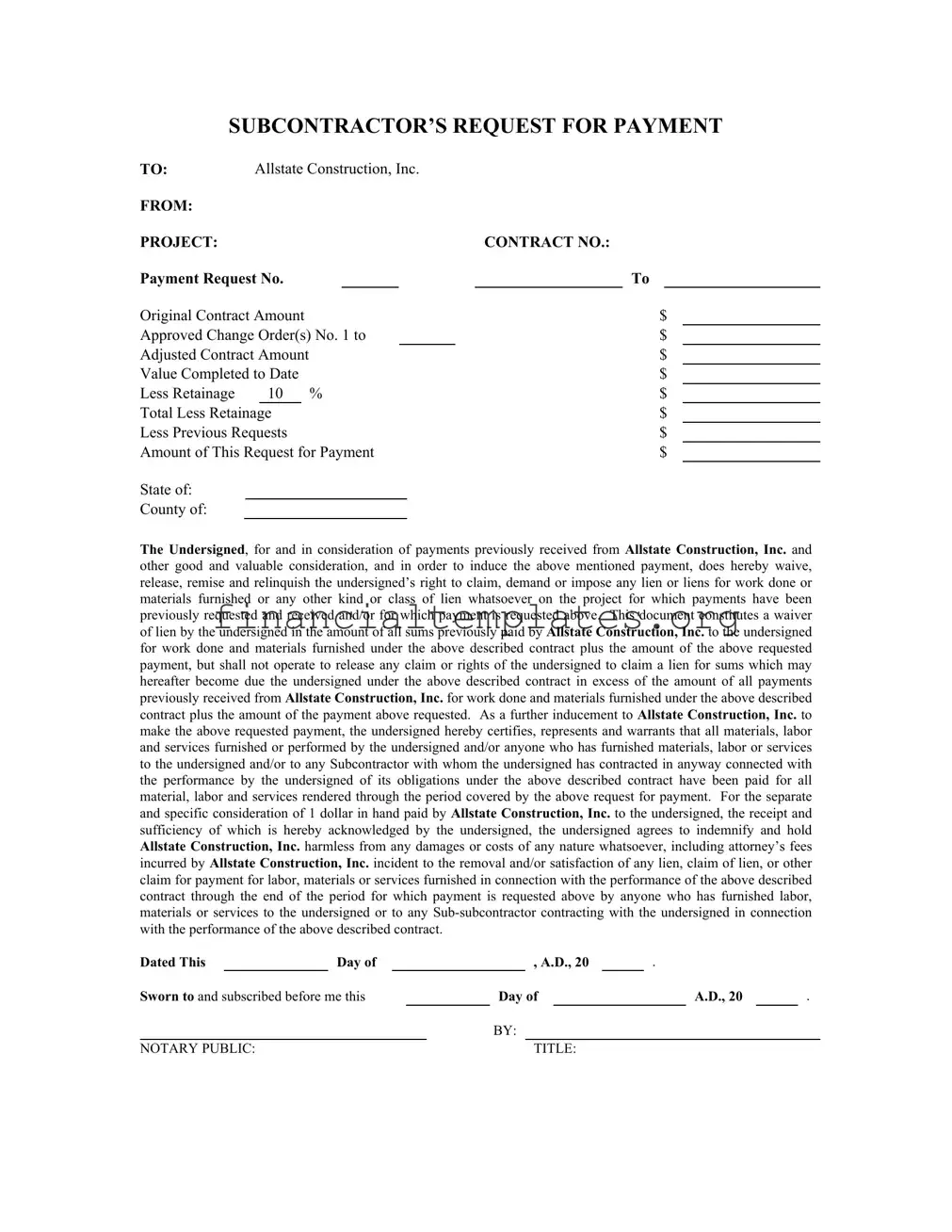The Change Order Form is remarkably similar to the Construction Request Payment form, as both serve pivotal roles in the construction process, involving modifications to the original contract. While the Construction Request Payment form facilitates the process of requesting payment for work completed, the Change Order Form is used to document and approve changes to the project's scope, including adjustments to the contract amount, thus potentially affecting subsequent payment requests. Both forms ensure clear communication and agreement between parties regarding the cost implications of changes to the project or payment for completed work.
A Contractor’s Application for Payment is another document closely related to the Construction Request Payment form. Both documents are integral to the construction billing process. The Application for Payment typically provides a detailed breakdown of the work completed and materials provided, much like the Construction Request Payment form lists completed work values and materials furnished. Each serves to formalize the request for payment, ensuring contractors are compensated for their work according to the terms of the contract.
The Lien Waiver shares similarities with the section in the Construction Request Payment form that relinquishes the right to impose any liens for work done upon payment. A Lien Waiver is typically used as a receipt that payment has been received and waives the payee's right to file a lien against the property. This function is crucial in both documents to prevent double payment and to assure the payer that once payment is made, no lien will be placed on the property for that portion of work.
The Performance Bond is akin to the indemnification section of the Construction Request Payment form in that it provides a guarantee. While the Performance Bond safeguards the project owner against losses if the contractor fails to fulfill their obligations, the indemnification segment in the Construction Request Payment form protects the payer from damages or costs arising from lien removals or satisfaction post-payment. Both documents manage risk by offering financial protection against non-compliance or failure to meet contractual terms.
A Payment Bond resembles the Construction Request Payment form’s aspect of ensuring that subcontractors and suppliers are paid. The Payment Bond is designed to guarantee payment to all project participants, mirroring the Construction Request Payment form’s purpose of ensuring that labor, materials, and services are compensated. Both are vital for maintaining a fair and trustworthy financial transaction system within construction projects.
Project Schedules are indirectly related to the Construction Request Payment form via the organization and planning of work completion. While a Project Schedule outlines the timeline, sequences, and deadlines for project tasks, the Construction Request Payment form translates this progress into financial terms, requesting payment for work that aligns with the Project Schedule. The successful execution of what's outlined in the Project Schedule often precedes a payment request, making these documents complementary in project management.
The Subcontractor Agreement bears resemblance to the Construction Request Payment form by defining the terms of work between a subcontractor and the primary contractor. While the Subcontractor Agreement establishes the scope of work, payment schedule, and responsibilities, the Construction Request Payment form is a follow-through, signifying the completion of agreed-upon tasks and the request for corresponding payment. Both documents are crucial for delineating and executing the financial and work-related aspects of subcontracted work.
Material Lists can be seen as complementary to the Construction Request Payment form since both deal with the accounting of resources. The Material List enumerates the supplies needed for a project, helping in budgeting and procurement, whereas the Construction Request Payment form might reference costs related to materials already utilized. By detailing materials furnished and their costs, these documents collectively aid in the financial management of a construction project.
A Daily Work Report, while primarily focused on documenting daily activities and progress on the construction site, complements the information on the Construction Request Payment form. It provides evidence and support for the work completed as stated in payment requests. This documentation helps in validating the completion of work and justifying the transactions detailed in the Construction Request Payment form, ensuring transparency and accountability in project billing and payment processes.
Finally, the Final Completion Certificate, which signifies the official completion of the project and satisfactory fulfillment of contractual obligations, correlates with the final payment request detailed in the Construction Request Payment form. The issuance of this certificate often precedes or coincides with the final payment, serving as a prerequisite that ensures all work has been completed to standards. Therefore, both documents mark crucial milestones in the closure and financial reconciliation of a construction project.

